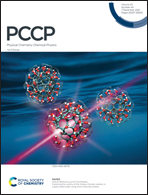Electrical properties of yttria-stabilised hafnia ceramics†
Abstract
Cubic, yttria-stabilised hafnia, YSH, ceramics of general formula, YxHf1−xO2−x/2: x = 0.15, 0.30 and 0.45 were sintered at 1650–1750 °C and characterised by impedance spectroscopy. All three compositions are primarily oxide ion conductors with a small amount of p-type conductivity that depends on atmospheric conditions and appears to increase with x. The electronic conductivity is attributed to hole location on under-bonded oxide ions and the absorption of oxygen molecules by oxygen vacancies, both of which occur on substitution of Hf4+ by Y3+. Composition x = 0.15 has the highest total conductivity and shows curvature in the Arrhenius plot at high temperatures, similar to that of the most conductive yttria-stabilised zirconia.


 Please wait while we load your content...
Please wait while we load your content...